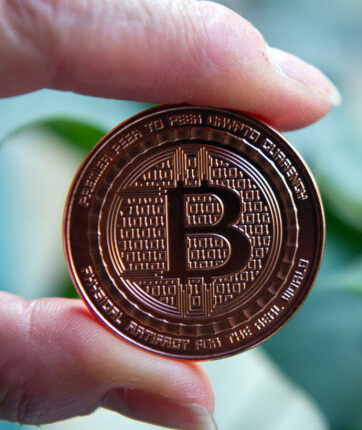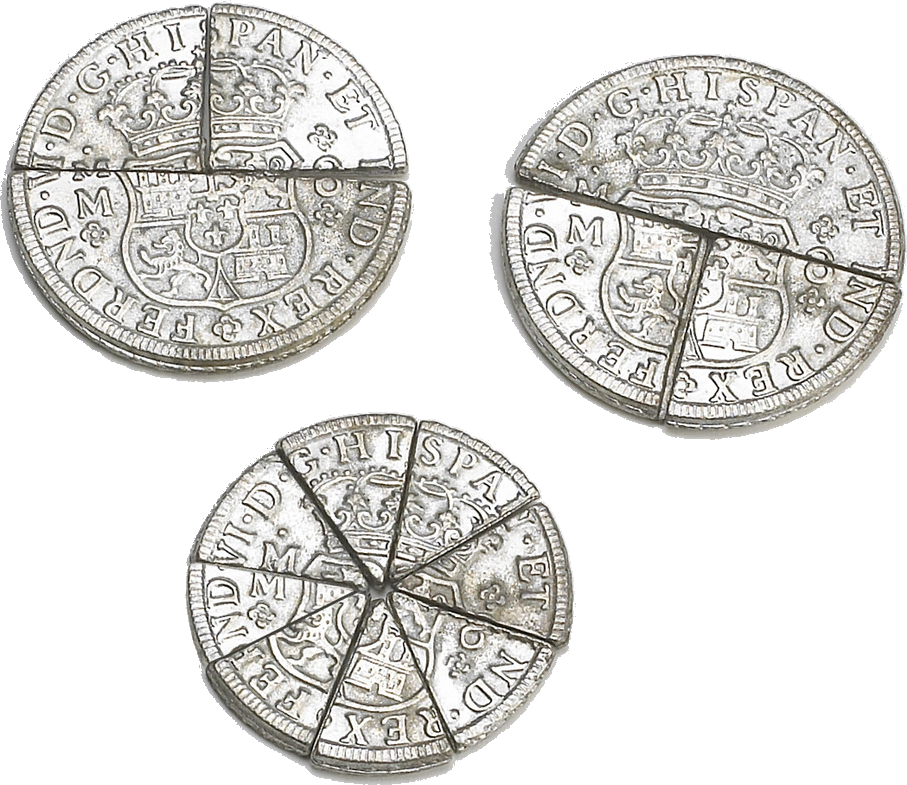As with other recent articles, this one was originally published as an answer to a member of Quora, a Q&A site in which I am a cryptocurrency columnist. And just like the previous one in this Lifeboat series (also posted today), this is a Q&A exchange with a newbie—a bitcoin beginner.
The question is simply: “How can Bitcoin be divided into units smaller than one?” While the answer may seem obvious to someone versed in math, statistics or economics, I see this question a lot—or something very similar.
I can explain by asking a nearly identical question; one that the enquirer can probably answer easily. The goal is to provide the tools to answer the question—and in a manner that helps the reader recall and make use of the answer in the future. This is how I approached an answer…
Puzzle me this: Can you divide 100 into smaller pieces? Of course you can! You just divvy it up. After all, it’s just a number.
- Let’s say you divide 100 by 10: You get 10 pieces of 10 each.
- Now, starting with the same 100, say that you divide it by on hundred. This gives one hundred pieces of ‘1’ each.
Until now, we have been talking about a number—not a real thing. Next, lets say that you start with $100 (a single bill with Ben Franklin on the front). You are in a casino, standing next to a bill/coin change machine. No counterfeit bills; no funny stuff.

Can you divide it into smaller bills? Sure! The change machine gives you one hundred crisp notes with George Washington. on the front.
Now, about your question: You are already down to pieces of just 1 unit each (i.e. one US dollar). Is this the limit of granularity? Is there no way to divide the units any further?
Of course you can! You can exchange each dollar for 4 quarters, or 10 dimes or even 100 pennies. One cent is just another way of saying 0.01 dollars.
And don’t stop there. Just because the government doesn’t bother with coins of a smaller denomination, a processor that deals in micro-payment or a seller that holds credits for small, cumulative purchases (i.e. web visitor clicks) could easily track your credits based on much smaller units—say one millicent, or 1/1000 of a penny.
Example: Suppose that a natural gas pipeline crosses the territory of an indigenous population in the interior of a country. The government enters into an agreement that pays the tribal authorities 1/30 cent for each 500 BTU of gas energy equivalent that passes through the pipeline. Micro payments, contracts and quotations are of this kind are crafted frequently.
Bitcoin is even more flexible than a dollar, because it is a virtual ledger that is stored across many bookkeepers. The ability to deal with small units is simply math. The protocol was designed to support 8 decimal places, but this can be extended to even smaller units.
In fact, the total number of Bitcoin that can ever exist (21 million BTC) could have just as easily been called 1 BTC (or 10 trillion BTC). It really doesn’t matter. That decision was arbitrary. To make things convenient for buyers and sellers, we will all eventually refer to the units that put our everyday purchases in the range of 1-to-100.

For example, on the USA east coast, a wrapped head of fresh lettuce costs 0.000166 BTC.* That’s an awfully small number to remember or to work with.
But wait! Bitcoin already has a unit name for (1) one-hundred-millionth of a bitcoin. We call this a “satoshi”. Each satoshi is equal to 0.00000001 BTC.
So, that same head of lettuce costs 16,583 Satoshis. But this is also a difficult number to work with. It sounds more like the amount of money you spend on a car and not a small consumable.
So, if Bitcoin were in wide use today at the grocer and other retailers, we would probably be quoting and comparing units of 1/10,000 BTC. Let’s call each unit 1 DC, for “deci-milli”.
At today’s exchange rate, a head of lettuce costs 17 DC and a basic Toyota Camry without the expensive options will set you back 16,700 DC.*
Will you get used to it? Sure! It’s no different than moving to France. Your intuitive feel for the cost of things will become second nature when vendors begin quoting goods and services in units of bitcoin. Soon, even advertising and catalogs will display prices this way.
When this happens, all sorts of good things follow. For example, the volatility that we perceive today (because we are comparing Bitcoin to the US dollar) will disappear. Prices in BTC (or DC) will seem quite stable, even though the US dollar will seem to have unpredictable spikes and dips.
* Assumptions / Exchange Rate
- On the USA east coast, a head of lettuce is $1.99. (New York is far from California and Mexico where lettuce is less expensive)
- At the time of this post, 1 BTC = about $12,000 USD
- A base model Toyota Camry without tax or extra features sells for about $20,000
Related:
Philip Raymond co-chairs CRYPSA, hosts the Bitcoin Event and is keynote speaker at Cryptocurrency Conferences. He is a top writer at Quora.








Comments are closed.